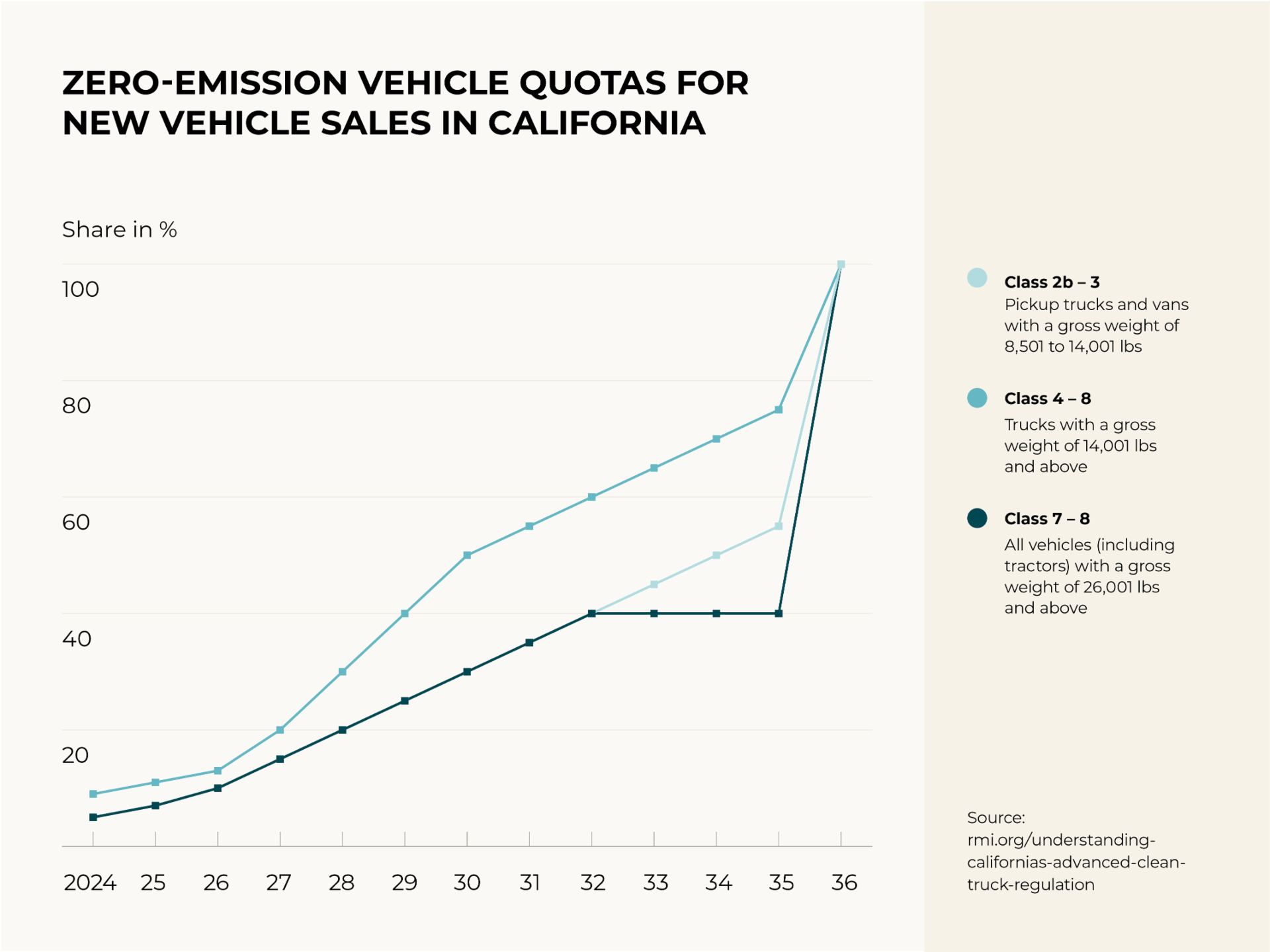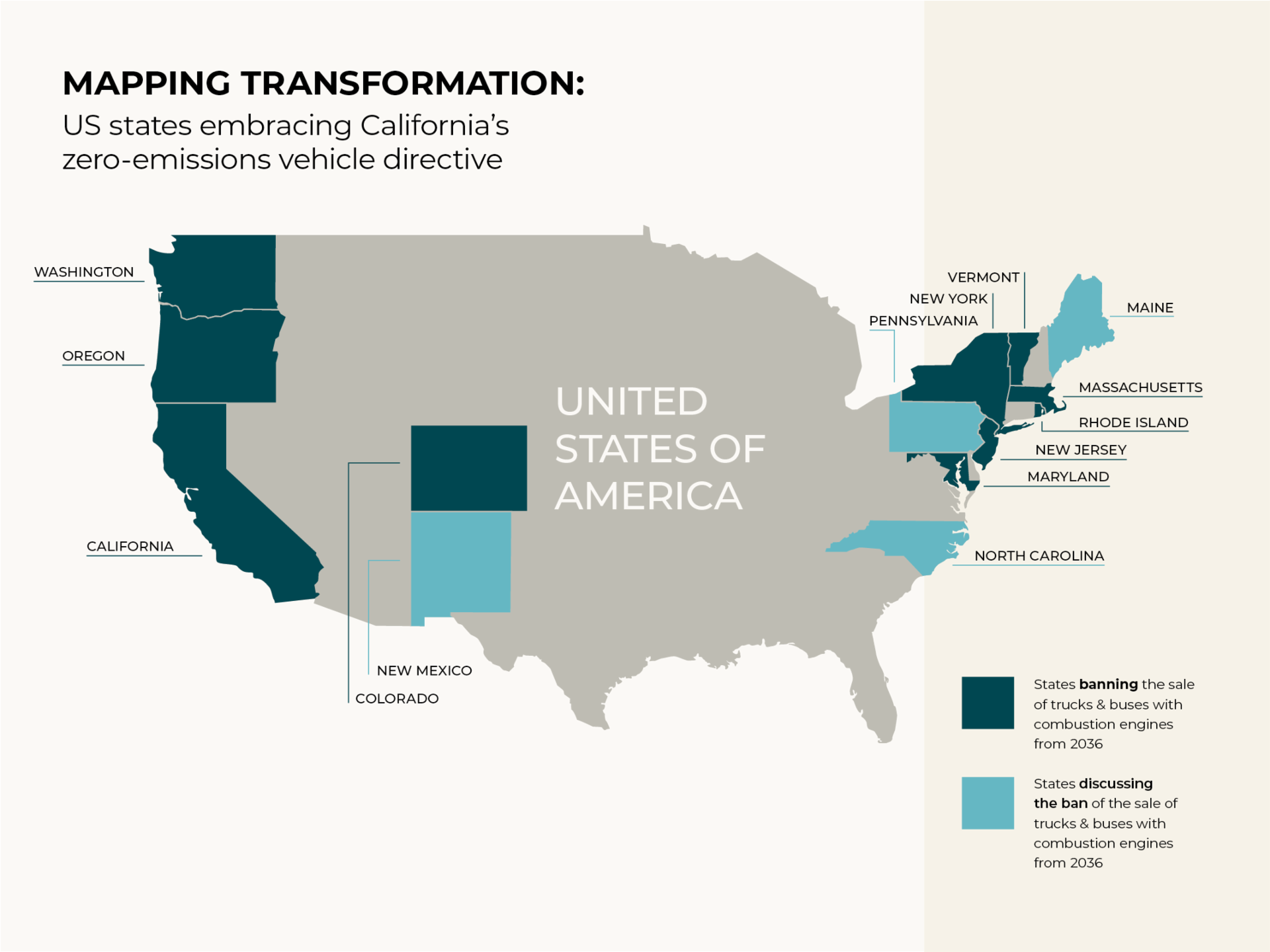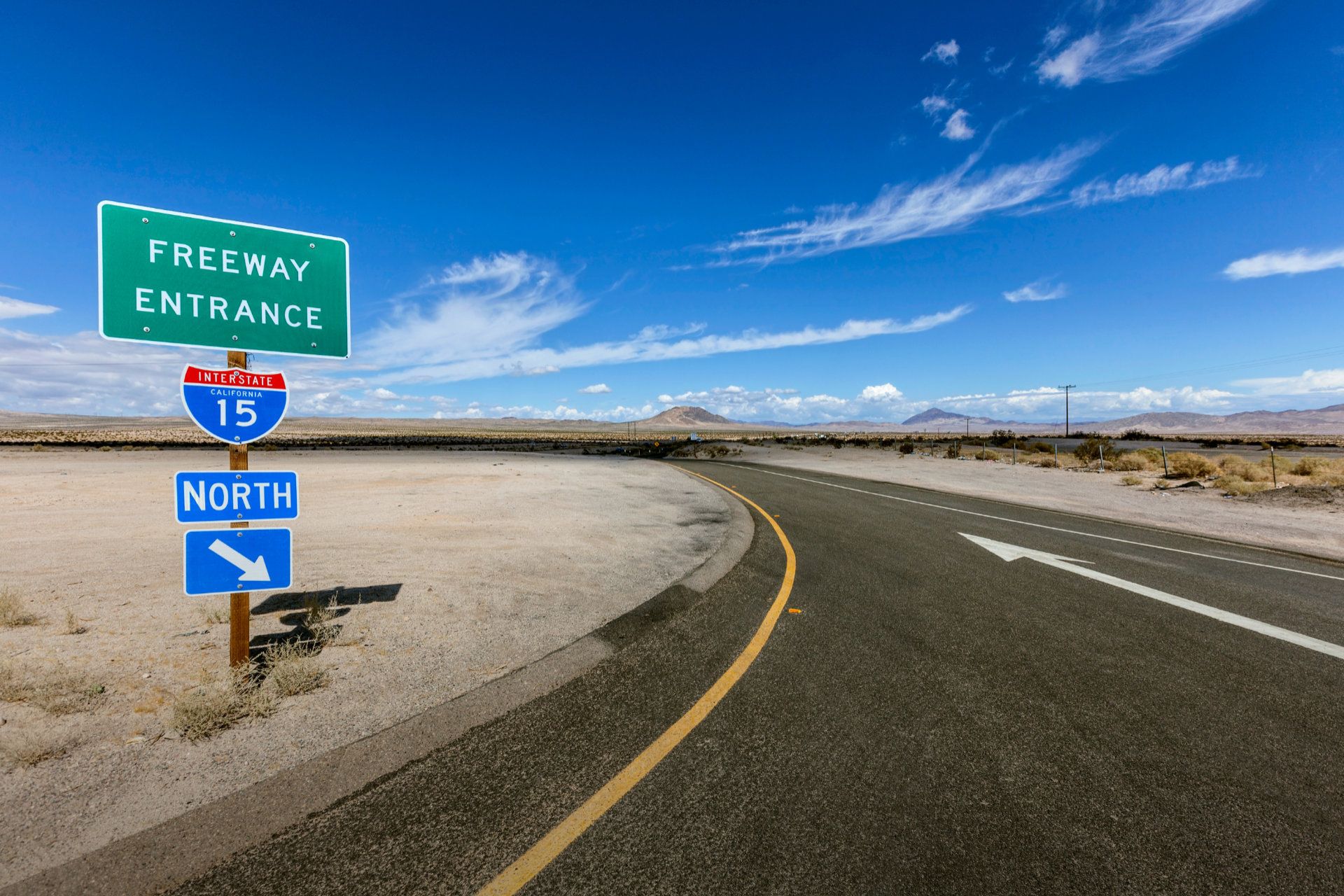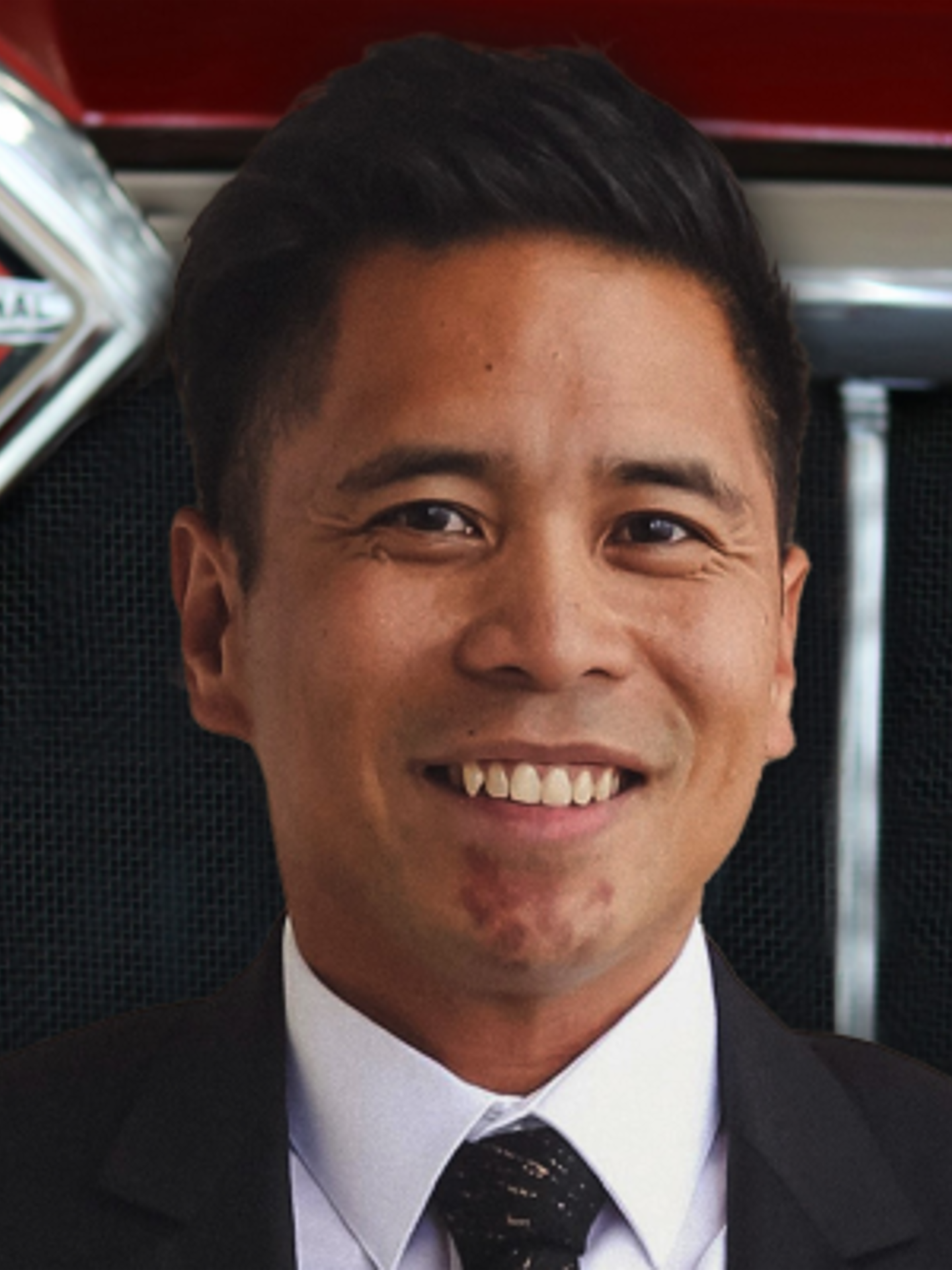In recent years, California has taken steps to set sales and purchasing requirements for passenger and commercial electric vehicles in a bid to reduce mobile source emissions within the state. It has also introduced a low-NOx emission regulation aimed at reducing emissions from diesel engines. Due to another provision of the federal Clean Air Act, states with similar air quality challenges can adopt California’s rules and standards, or the EPA’s standards, which can be challenging for customers and companies from a compliance perspective.
The TRATON brand Navistar works with governments at both federal and state levels to address the challenges of compliance and to create an environment that ensures regulatory stability for both diesel and electric vehicles as we look to the future.
Government action on transportation emissions
From 2036, the ban on the sale of medium and heavy-duty trucks and buses with combustion engines in California is scheduled to come into effect. In their place, only new zero-emission trucks and buses will be eligible for sale, according to the vote of the regulatory authority California Air Resources Board (CARB) at the end of April 2023. From next year, California will require the transportation industry to gradually increase the proportion of battery-powered trucks, buses, vans and pick-up trucks by 2035; twelve years later, commercial vehicles and buses in California will have to be completely emission-free on the roads. According to the new CARB regulations, half of all vehicles purchased by state and municipal authorities must be emission-free from 2024, and 100% by 2027, if the technology is available. With these plans, the Golden State is going far beyond plans developed by the European Commission, which has proposed reducing CO2 emissions from new trucks by 65% and 90% by 2035 and 2040, respectively.

In combination with the "Inflation Reduction Act" (IRA) initiated by U.S. President Joe Biden last year, which provides massive tax incentives for green investments in the United States, a portfolio of challenges and opportunities is now opening up for manufacturers of buses and trucks with battery-electric drive systems on the other side of the Atlantic. The aim is to boost the production and sale of battery-electric vehicles in the United States and promote the switch to clean energy sources. The same applies to the production of solar cells, wind turbines, and batteries. It is clear that climate protection and environmental programs have become part of the public consciousness for some in the United States and are intended to turn U.S. companies into global technology leaders. The "Infrastructure Investment and Jobs Act" is an important step in this direction at a federal level: the U.S. government is making financial advances and providing 1.2 trillion U.S. dollars in subsidies over the next five years. Part of the money will be invested in the conversion of local public transportation to electric drives and the expansion of public charging networks for electric vehicles of all kinds.
Perspectives in other states
In New York, Governor Kathy Hochul signed into law the "New York Advanced Clean Truck Rule", or ACT for short, in September 2021. At its core, this involves the sale and gradual deployment of zero-emission commercial vehicles. The new regulation, which was issued by the state Department of Environmental Conservation (DEC), requires manufacturers of vehicles over 8,500 pounds (3.85 tons) to sell an increasing number of zero-emission vehicles (ZEVs) in the State of New York. The regulation complements recently passed legislation. The goal is that by 2045, to the extent feasible, 100% of all medium and heavy-duty vehicles (including large pick-up trucks and vans, delivery trucks, panel vans, school and transit buses, and long-haul delivery trucks) offered for sale or lease in the state will be zero-emission. "New York continues to lead the way in addressing the climate crisis and is taking bold steps to end our dependence on fossil fuels and transition to clean energy," said Governor Hochul. She continued, "The regulations we are enacting will help us reduce pollution and emissions, drive the transition to clean electric trucks, and address the environmental injustices that affect too many communities in our state."
In addition to California and New York, other progressive leaning states such as Colorado, Massachusetts, New Jersey, and Washington are also currently discussing a ban on combustion engines and the associated switch to battery-electric drives. The state of Washington, located in the north-west of the United States, is planning to ban the sale of combustion engines as early as 2030; in seven years' time, no new vehicles with combustion engines will be allowed to be sold there – regardless of whether they are cars, trucks or buses. However, the law still has to be signed by Governor Jay Inslee, with further details to be finalized by the end of 2023/beginning of 2024. Inslee already had a similar law on his desk, but he did not sign it. The news portal Electrek also reports that the law would affect every vehicle registered in Washington and would therefore not allow the import of vehicles with combustion engines from other states.

Impact on manufacturing
Given government action to incentivize zero-emission transportation and to reduce emissions, manufacturers such as Navistar are producing vehicles that meet both regulatory requirements and customer demand. Navistar works to develop incentive programs through law and regulation, set reasonable standards, deploy charging infrastructure, and address other issues that affect the enabling conditions for the EV transition. Navistar also cautions state and federal governments on the implementation of mandates without proper deployment of the infrastructure needed by customers to use the vehicles we produce.
"As a manufacturer of buses and trucks, we have the entire North American market in mind, and the only way to ensure that governments and customers meet their zero-emission goals is for governments to create programs, policies, and regulations, that are aligned and that enable the deployment of vehicles and infrastructure," says Andrew Lund, manager of federal government affairs at Navistar. His colleague Kevin Maggay, policy strategist at Navistar in California, adds: "Navistar prefers uniform standards for ease of implementation, but above all we advocate for requirements that are feasible and understandable for our customers and ourselves and that also provide certainty in the market."
And while major cities in California such as San Francisco (which aims to achieve completely emissions-free transport by 2040; from 2030, only electric vehicles are to be newly registered) and Los Angeles (whose "Green New Deal" aims to have only electric vehicles on the streets of the city of millions by 2050) have set themselves tight targets, other U.S. states, such as Texas and Florida, are struggling to reduce CO2 emissions in road traffic and the transport industry.
“The only way to ensure that governments and customers meet their zero-emission goals is for governments to create programs, policies, and regulations, that are aligned and that enable the deployment of vehicles and infrastructure.”
Andrew Lund Manager of Federal Government Affairs at Navistar
"In the United States in particular, there is disagreement between the major political parties (Republicans and Democrats) over how to proceed with the EV transition. There is debate over the role of government in reducing emissions and funding programs, and the impact those decisions will have on customer choice and fiscal policy," explains Andrew Lund. "Navistar works with both major parties to address concerns, develop consensus where we can, and create that clear and achievable path for our business and our customers.”
The modular system jointly developed by TRATON, and its brands can fulfil a wide range of customer requirements in a future world of transport. However, before battery electric drive systems can play the role in transport in the United States that is necessary for climate protection reasons, a high-performance charging infrastructure from coast to coast would need to be built.
“Navistar prefers uniform standards for ease of implementation, but above all we advocate for requirements that are feasible and understandable for our customers and ourselves and that also provide certainty in the market.”
Kevin Maggay, Political Strategist at Navistar
“The successful electrification of transportation in the United States will require extensive cooperation between all stakeholders including federal regulators, state and local governments, OEMs, supply chain vendors (especially for batteries), and utilities and power producers, and importantly require the confidence of customers that these vehicles meet their requirements for operational performance, and cost-effectiveness,” says Brien Sheahan, a former chairman and CEO of the state public utility commission of Illinois and a senior advisor for government relations and regulatory policy at Navistar. "While there is broad agreement in Europe on the need for the electrification of commercial vehicles, public opinion in the United States is more diverse," according to Sheahan. For Andrew Lund, it's all just a matter of time: "The TRATON GROUP and its Navistar brand are ready to work with stakeholders in the short and long term to address the needs of our customers as they embark on their zero-emission vehicle transition.”




